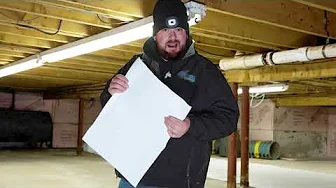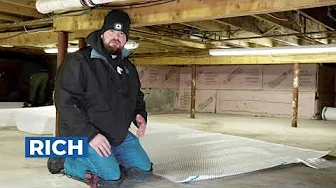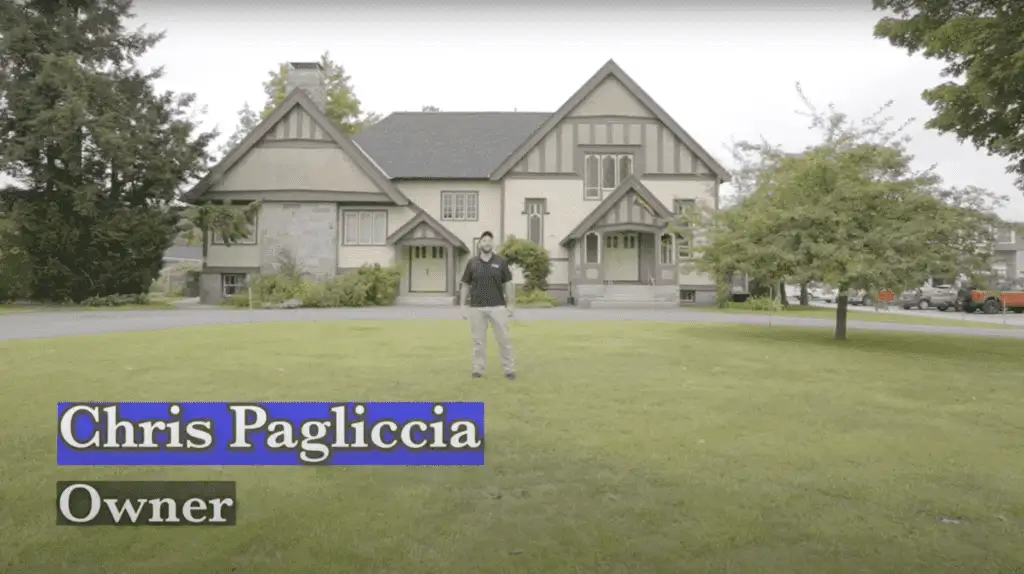Foundation Crack Repair Hampton NH
Cracks in your foundation can cause serious structural problems over time. They may start as small issues, but if left unaddressed, they can lead to water seepage, uneven floors, or even compromised stability of your home. Foundation cracks are a common concern for homeowners in Hampton, NH, due to the region’s fluctuating weather conditions and soil composition.
Repairing foundation cracks is not just about aesthetics. It’s about safeguarding your home’s value and ensuring the structural integrity of your property. Here’s everything you need to know to understand, assess, and address foundation cracks effectively.
Real People - Real Great Results
Crawl Space Video Playlist
Common Causes of Foundation Cracks in Hampton, NH
When it comes to why foundation cracks happen, Hampton, NH, has the perfect storm of contributing factors. It’s not just one thing; it’s a combination of environment, weather, and the inevitable march of time. Here’s a closer look at the main culprits:
- Weather Patterns: Hampton’s weather doesn’t play nice with foundations. Freeze-thaw cycles hit hard here, thanks to frigid winters right on the heels of warm summers. All that freezing and thawing causes the surrounding soil to expand and contract, putting relentless pressure on your foundation walls. Over time, this pressure finds its weak points, leading to cracks.
- Soil Movement: The soil in this area is as much the problem as the weather itself. Coastal soils around Hampton can be tricky—especially ones with high clay content. Clay expands when it’s wet and shrinks when it dries, creating a tug-of-war of stress on your foundation. If your soil feels moody, it’s a factor you simply can’t ignore.
- Water Issues: Water is another silent destroyer. Improper drainage systems, heavy rains (which Hampton sees its fair share of), and rising groundwater tables saturate the soil around your home. The result? Pressure builds and soil shifts, which in turn leads to—you guessed it—foundation cracks. If water is pooling around your foundation after a storm, that’s a major red flag.
- Settling: No foundation is exempt from the natural settling process. The weight of your home gradually shifts and presses down unevenly over time. While some settling is normal, when it happens unevenly, the stress can create cracks that are far from harmless. If your home feels like it’s leaning into one corner or a door isn’t closing quite right, uneven settling could be the sneaky culprit.
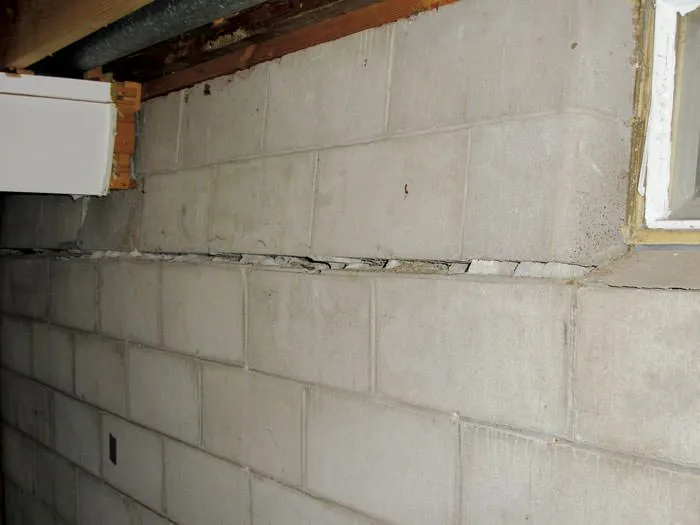
Understanding these causes isn’t just interesting trivia or a scare tactic—it’s the key to stopping cracks before they stop you. Whether it’s the soil or the seasons, Hampton’s foundations are always in a bit of a battle, but knowing what you’re up against means you can better protect your home.
Types of Foundation Cracks and What They Mean
Not all cracks are a five-alarm fire. A crack in your foundation can range from a minor cosmetic issue to a flashing neon sign of structural danger. Deciphering the type of crack you’re dealing with is the first step toward deciding what action to take—or how fast you need to take it.
- Hairline Cracks: These fine, superficial cracks are usually innocent, resulting from the normal curing process of concrete. Think of them as wrinkles in your home’s “skin.” They might not need immediate intervention, but keeping an eye on them is key. If they expand or start letting water through, it’s no longer just a cosmetic quirk.
- Horizontal Cracks: Here’s where your attention should sharpen. Horizontal cracks are often driven by external pressure—think swollen soil or excess water ganging up on your foundation walls. These are structural in nature and usually require a professional’s touch. Ignore them, and the result could be bowing walls or worse.
- Vertical Cracks: More common and less inherently worrisome. These often result from natural settling as your home adjusts to its environment. That said, any crack that widens significantly or leaks water could signal a deeper issue. Size and seepage are your tiebreakers when deciding how concerned to be.
- Diagonal Cracks: These are often connected to uneven settling or soil movement beneath the foundation. One corner of your house pushing harder than the other? Enter diagonal cracks. The steeper they are—and the wider they get—the more urgently they scream for attention.
- Stair-Step Cracks: Found in brick or block foundations, these follow the mortar lines and are often an ominous sign of shifting or settling soil. Think of these as the “connect-the-dots” puzzle you don’t want to solve. Left unattended, they may lead to more significant structural challenges down the line.
Here’s the bottom line: cracks talk, and each type has its own language. Learn to interpret what they’re saying so you can respond quickly and effectively. Sometimes they’re just whispering about harmless hairline hiccups, but other times they’re shouting about serious structural woes. Listening carefully could save you a hefty repair bill—or your home’s overall stability.
Why Foundation Repair Should Be Done Promptly
Delaying foundation crack repairs is like ignoring a blinking warning light on your car’s dashboard—it’s only a matter of time before a manageable issue turns into a costly headache. Structurally, cracks are not static; they deepen, widen, and invite bigger problems. What might begin as a hairline fissure from routine settling can evolve into significant structural instability if left unattended. The consequences? You’re looking at exponentially higher repair bills, potentially damaged property, and an unsafe living environment.
Take water, for example. Seepage through even the smallest cracks can escalate into a chain reaction. Moisture infiltrates your walls, fostering mold, weakening materials, and even damaging your flooring or belongings. Once water settles into the foundation, hydrostatic pressure builds up, stressing the structure further—a situation where one small crack can quickly spawn others. It’s not just your walls at risk; prolonged water issues compromise insulation and HVAC systems, setting the stage for energy inefficiency and higher utility bills.
Safety is another reason to act fast. A compromised foundation isn’t “just settling”—it jeopardizes the entire structural integrity of your home. Cracks that spread, particularly horizontal or stair-step ones, can signal serious instability. Imagine sagging floors, misaligned doors, or windows that refuse to open and shut properly. Those quirks aren’t charming signs of an aging home; they’re red flags for mounting structural tension.
Finally, think long-term. A cracked foundation isn’t just a technical issue; it’s a financial one. Left alone, these problems diminish your home’s market value and make buyers skittish during resale. Home inspectors rarely ignore foundation cracks, and when they’re flagged, the leverage shifts against you as the seller. Even worse, mortgage lenders might balk at the property altogether if structural safety questions are raised. Short-term inaction could be the most expensive choice you ever make.
Prompt repair is more than just a smart move—it’s non-negotiable. Addressing the problem now prevents it from escalating, saves you money, safeguards your home’s integrity, and keeps you ahead of future complications. With foundation repair, “when” matters just as much as “how.” Don’t overthink it. Act.
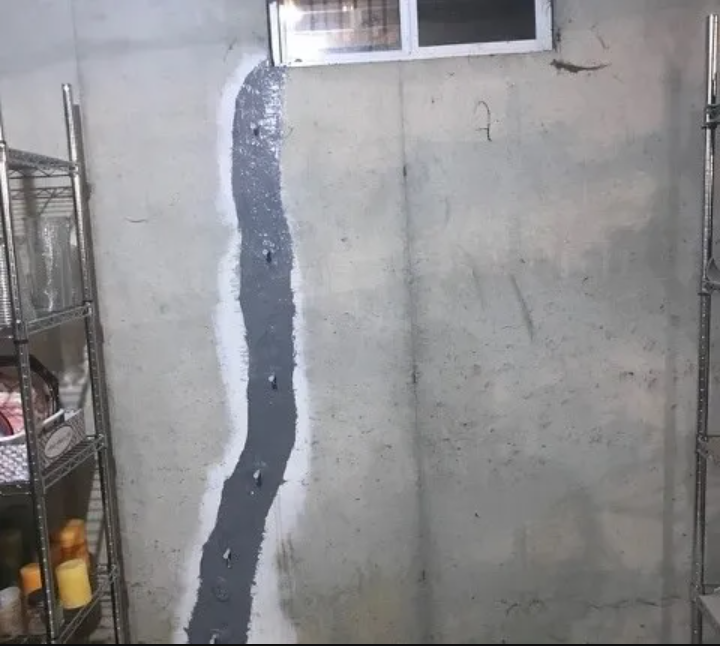
4. Underpinning
- Best for: Cracks caused by foundation settlement.
- How it works: Piers or piles are installed deep into stable soil or bedrock beneath the foundation, effectively raising and leveling it.
- Why it works: This method not only stabilizes the foundation but also prevents future movement by bypassing unstable surface soils.
5. Grading and Drainage Fixes
- Best for: Water-related foundation cracks.
- How it works: Adjusting the slope of the surrounding landscape ensures that water flows away from the foundation. Solutions like French drains or downspout extensions prevent soil saturation near the home.
- Why it works: Reducing water pressure eliminates one of the most common causes of foundation shifting and cracking.
The key takeaway? Foundation repair is not a one-size-fits-all task. Matching the method to the crack type and its underlying cause ensures effective, lasting results. Don’t cut corners—trust professionals with the knowledge and tools to resolve the issue for good.
Foundation Crack Repair Methods
Different cracks demand different solutions. Here are the most effective methods used by professionals to address foundation cracks:
1. Epoxy or Polyurethane Injection
- Best for: Minor to moderate cracks.
- How it works: A specialized resin—epoxy or polyurethane—is injected directly into the crack. This seals the gap, prevents water infiltration, and reinforces the structure.
- Why it works: Epoxy restores strength, bonding the crack as if it never existed. Polyurethane, on the other hand, remains flexible, making it an ideal choice for cracks prone to movement.
2. Carbon Fiber Straps
- Best for: Horizontal cracks caused by soil pressure.
- How it works: High-tensile carbon fiber straps are adhered to the foundation wall using epoxy adhesive. These straps prevent further bowing or expansion.
- Why it works: Carbon fiber is light but incredibly strong, delivering reinforcement without requiring invasive procedures.
3. Sealants
- Best for: Hairline cracks or minor leaks.
- How it works: Surface-level sealants, such as hydraulic cement or waterproof caulking, are applied to the exterior of small cracks to block water from entering.
- Why it works: While effective for shallow repairs, sealants don’t address underlying structural issues, so they’re a better quick fix than a long-term solution.
When To Hire a Professional
You might think you can handle a foundation crack with a quick trip to the hardware store and some DIY enthusiasm. But here’s the truth—some cracks demand expertise that no weekend project can match. Knowing when to bring in a professional can be the difference between a quick fix and a long-term headache.
If a crack is wider than 1/8 inch, it’s no longer just a cosmetic issue. Sizes like that often signal deeper problems within your foundation. Worse, if the crack keeps expanding, waiting to address it is like ignoring oil leaking from your car—it’s only going to get messier and more expensive.
Horizontal or stair-step cracks? That’s your red flag. These types of cracks indicate significant structural stress, potentially from soil pressure or uneven settling. If water has already started seeping through, things are serious. Water doesn’t just ruin drywall and flooring—it weakens the very bones of your home.
In addition, look at the bigger picture. Are floors starting to slant? Have windows or doors become stubborn, refusing to open or close properly? These are warning signs your foundation isn’t just cracked—it’s shifting.
Professionals don’t rely on guesswork. They have the diagnostic tools and experience to identify the root cause and provide lasting solutions. Sure, hiring an expert might seem like an upfront expense, but it’s a fraction compared to the cost of repairing widespread structural damage later. This is your home we’re talking about. Don’t gamble on a crack that could become a chasm.

Preventing Foundation Cracks in the Future
Foundation crack repairs can be expensive and disruptive, so it’s smarter—and significantly cheaper—to avoid them in the first place. Prevention boils down to protecting your home from external pressures that can stress or shift the foundation. Here’s what you can do:
- Control Water Flow: Water is the silent culprit behind most foundation problems. A good starting point is maintaining your gutters and extending downspouts so they carry rainwater at least 5–10 feet away from your home. It might seem basic, but directing water away from the foundation can make a world of difference. If pooling water is unavoidable, think about installing a sump pump or upgrading to French drains.
- Mind the Landscaping: Overgrown roots can disturb soil stability, sneaking under your foundation like unwelcome houseguests. When planting trees, leave enough distance from your home to prevent root encroachment. As a general rule, keep plants roughly as far from the foundation as their mature height—so a 15-foot tree should be planted at least 15 feet away.
- Manage Soil Moisture: New Hampshire’s weather extremes can wreak havoc on soil, with cycles of drought and rainy seasons causing it to shrink, swell, and destabilize the foundation. During dry seasons, consider lightly watering the soil around your home to maintain even moisture. Overwatering, however, can lead to shifting or swelling—aim for consistency, not saturation.
- Stay Ahead with Routine Inspections: Discipline yourself to walk around the exterior and interior of your home every few months, checking for signs of cracks or water damage. These visual spot-checks can catch small issues while they’re still minor headaches, well before they turn into structural nightmares.
- Upgrade Grading If Needed: If water naturally slopes toward your foundation, re-grading around your house to create a slope (typically a 5% grade) can redirect water away. Not glamorous, but it works.
Proactive care doesn’t come with a ribbon-cutting ceremony, but it pays off in the form of fewer problems down the road. A little effort today saves a serious bill tomorrow.
Working With Hampton, NH Experts
Hampton’s peculiar mix of coastal conditions, fluctuating temperatures, and diverse soil composition makes foundation repair uniquely challenging—and uniquely solvable with the right people on the job. Local contractors aren’t just repair experts; they’re experts in this area. They’ve seen how icy winters cause frost heave, how sandy coastal soils shift with heavy rain, and how saline conditions can gradually chip away at concrete over the years. This isn’t theory—it’s hands-on experience tailored to your neighborhood. When you work with a Hampton-based contractor, you’re not just hiring someone to patch cracks—you’re collaborating with someone who knows how to prevent issues specific to this region from creeping back.
They’ll bring solutions that factor in everything from soil stabilization to drainage fixes specifically suited to the area’s patterns of rainfall and runoff. More importantly, working with someone local often means faster response times, better familiarity with permitting and local building codes, and the peace of mind that comes with knowing they’re a phone call away if concerns arise down the road. Hiring outside the area might save a few bucks in the short term, but repairing cracks isn’t just a task—it’s an investment in your home’s future. In Hampton, that investment begins with expertise that knows the ground beneath your feet better than anyone else.
Conclusion
Foundation crack repair isn’t just about fixing visible damage — it’s about protecting your home’s structure, safety, and value. A crack might start as a hairline fracture hidden behind a piece of furniture, but ignoring it could invite water, weakness, and bigger bills down the line. These aren’t problems to procrastinate on, especially in Hampton, NH, where seasonal swings and varied soil conditions make homes particularly vulnerable. The good news? Acting promptly and deliberately can make all the difference. Know what you’re up against: identify the crack, understand its cause, and choose the right fix. Whether it’s injecting epoxy, reinforcing with carbon fiber straps, or going the extra mile with underpinning, you’re not just patching walls — you’re investing in your peace of mind.
But remember, not all cracks play by the same rules, and some signal deeper issues than others. If you’re unsure, bring in local professionals who understand Hampton’s unique challenges. They’ll assess the situation, tackle the problem at its root, and save you from headaches (and expenses) in the future. At the end of the day, foundation care is like taking care of your health: small steps now prevent bigger problems later. A strong foundation means a strong home, and for homeowners in Hampton, NH, protecting that foundation means protecting what matters most.
Reviews from Happy Customers
Our top priority is customer satisfaction, and we work closely with clients to understand their unique needs and goals.




